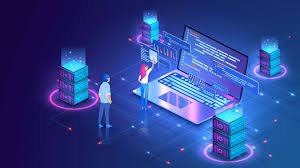In 2024, enterprises continue transforming legacy systems into agile, cloud-native architectures. The focus is on API-first strategies and intelligent augmentation. Many companies now adopt an API-centric approach, exposing old system functionalities through secure APIs. This allows new cloud and mobile applications to seamlessly integrate with legacy back-ends. Internal developer portals and API management tools make this process smoother, as seen in leading modernization roadmaps.
Artificial intelligence also enters the modernization equation. Firms add AI-driven analytics and automation to legacy platforms rather than rewriting everything immediately. For example, AI can be layered on top of an old database to provide predictive insights without altering the core app. European analysts highlight digital twins (virtual models) as a powerful way to modernize — businesses create digital replicas of equipment or processes to safely test changes. This allows incremental updates that improve systems over time.
Key Trends:
- API-First Rewrites: When replacing a legacy component, developers often start by implementing it as a microservice with an API. This enables an incremental rewrite: the old system and new microservice run side by side until the legacy part can be retired.
- Low-Code and Platform Tools: Many teams use low-code platforms (Microsoft Power Platform, Mendix) to rebuild internal tools quickly. This abstracts much of the coding, accelerating the modernization of front-end interfaces and data entry forms.
- Cloud-Native Architecture: Organizations prioritize cloud-native services. For instance, moving from an on-prem database to a managed cloud database, or from physical servers to serverless computing. This replatforming often uses Kubernetes or FaaS, ensuring better scalability.
- AI/ML Augmentation: Instead of discarding old systems, companies often integrate AI. For example, adding machine learning modules for demand forecasting or anomaly detection onto existing supply chain software. The EU’s tech reports note that AI and related technologies are key to improving Europe’s competitiveness.
- User Experience Overhaul: Legacy systems often have outdated UIs. Modernization includes building new user interfaces (web or mobile) on modern frameworks that connect via APIs to the legacy logic. This delivers a fresh experience for users while preserving valuable business logic.
Modernizing in 2024 means more than lift-and-shift. It’s about making legacy systems connectable, intelligent, and cloud-ready. By exposing functionality via APIs, leveraging cloud services, and layering in AI analytics, enterprises can breathe new life into old platforms. European businesses that embrace these trends will unlock faster time-to-market and improved operational efficiency, ensuring their systems remain assets – not liabilities – in the digital era.


